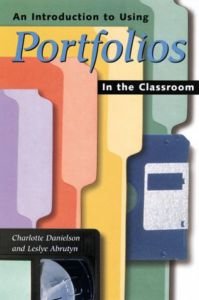As recently as the early 1990s, portfolios began to appear in the classroom in to support a variety of activities, from helping students and teachers set goals to helping teachers and administrators assess curriculum needs. For many educators, the portfolio process offers a clear strategy for the achievement of important classroom objectives. According to accounts from both researchers and practitioners, portfolios can: - engage students in learning content, - help students learn the skills of reflection and self-evaluation, - document student learning in areas that do not lend themselves to traditional assessment, and - facilitate communication with parents. This practical guide provides a useful resource for educators who would like to begin using portfolios in the classroom. In a concise format, the authors examine the many uses of portfolios and offer guidance on strategies to increase the effectiveness of this process in assessment and instruction.
In Collection
#71
Read It:
Yes
#71
Read It:
Yes
Portfolios in education
|
|
||||||||||||||||||
